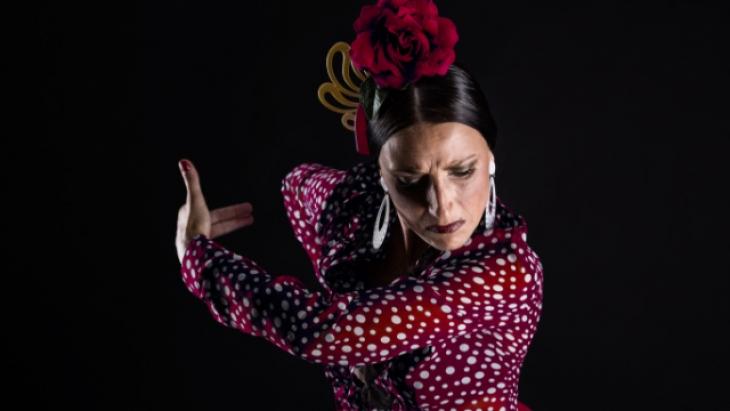Points of interest in the city
Bajarí, a route through Gypsy Barcelona

Charisma and spirit: from flamenco to rumba
Modern, cosmopolitan Barcelona hides away its ancestral sides, including its gypsy heritage. Proud, happy, flashy and deeply rooted in Barcelona, gypsy culture has left surprisingly authentic traces in the city, in music and dance above all. This is Gypsy Barcelona: always dominated by dancing and singing, by the joy and social protest of the rumba lyrics, the most eclectic expression of the Catalan gypsies' daring and spontaneous Barcelona. A pleasure waiting to be discovered.
Gypsy and popular
Gypsy culture has also given Barcelona a few famous names. One of these is the bailaora [flamenco dancer] and cantaora [flamenco singer] Carmen Amaya, a petite and prodigious woman born at the beginning of the 20th century in a shack in Somorrostro, an extremely poor shantytown neighbourhood that sprang on the sandy beach at the end of the 19th century and lasted for almost 100 years. Amaya exported her art around the world, from Latin America to the USA, when she performed for the Hollywood's big names and for the then President of the USA, Franklin D. Roosevelt himself, at a private event held at the White House. Barcelona worshipped the ground Amaya walked on, just as the rest of the world did: Passeig Marítim in Barceloneta has a stone fountain put up in proud memory of her.
Barcelona has plenty of power
It was during the post-war period of the mid 1940s, when the defeated city's lost souls were in bad need of some happiness, that Barcelona's gypsy community created their own musical style: the rumba catalana. Peret and El Pescaílla are two of the great musicians claiming credit for its creation, along with their neighbourhoods of origin: Raval and Gràcia.
Raval has one of the most iconic streets on the bajarí route, the tiny Carrer de la Cera, the birthplace of Peret, aka "the king of rumba", who was a great lover of his city . It was no surprise that he dedicated an ode to Barcelona in the form of a rumba for the 1992 Olympic Games: Gitana hechicera [Gypsy sorceress], whose lyrics may be loosely translated as: “If you're bored, Fountains of Montjuïc, and you're after the sky, come over to Paral·lel; if you're a girl looking for a man, come over to Mercat del Ninot; and if it's peace you want to live in, come over to Barcelona. She has power, Barcelona is powerful, Barcelona has power”.
Meanwhile it was in Gràcia, in the vicinity of Plaça del Raspall, that El Pescaílla and his clan claimed to have invented el ventilador, the fan, a particular way of playing the guitar that combines strings and percussion and which is the basis of the Catalan rumba that was hugely popular right up to the mid 1960s.
Peret and El Pescaílla may be the most popular representatives of the origins of the rumba catalana, but Gato Pérez was responsible for its rediscovery in the 1970s. Born in Argentina but Catalan by adoption, Gato reinvented the rumba, the legacy of the Catalan gypsies. He championed a genre that many had looked down on and which earned him his well-deserved fame. And the city will be eternally grateful to him: there is a plaque in Plaça del Poble Romaní, in the heart of Gràcia, that pays homage to Gato and his rumbero spirit.
Rumba and flamenco
But the Bajarí is full of other anonymous temples, popular and incredibly gypsy, such as the Hostafrancs neighbourhood, right next to Sants. This is another of the areas claimed as the cradle of Catalan Rumba. It enjoys the honour of having popularised the genre in the 1990s through Los Manolos, a group that was set up in the vicinity of Plaça d’Herenni.
On top of this - and just as well for the locals - you'll still find flamenco tablaos and rumba bands alive and kicking, where the Gypsy soul, anarchic and traditional in equal parts, flows to the rhythm of the guitar and the stamping of the dancers.

